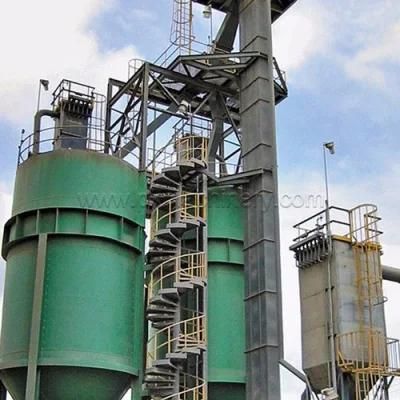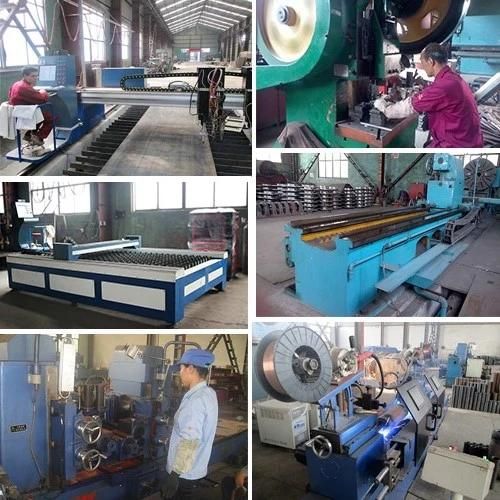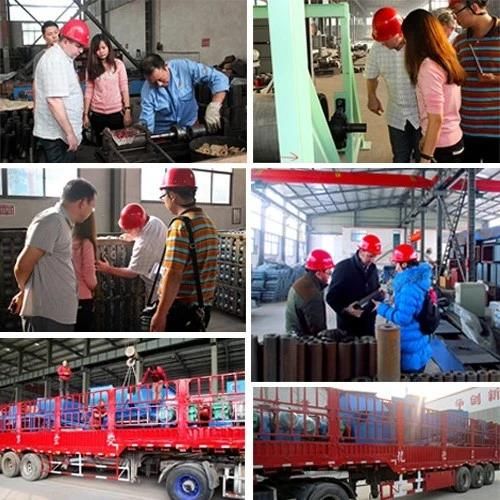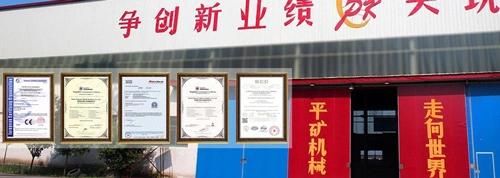
Wheat Vertical Lifting Conveyor Vertical Bucket Elevator Conveyor
Henan Pingyuan Mining Machinery Co., Ltd.- Type:Bucket Conveyor
- Structure:Belt Conveyor
- Material:Stainless Steel
- Material Feature:Fire Resistant
- Certification:ISO9001:2008, CE, Bcc,SGS
- Energy Saving:Energy Saving
Base Info
- Model NO.:TB
- Warranty:1 Year
- Color:Customized
- Customized:Customized
- Condition:New
- Model:Tb250,Tb315,Tb400,Tb500,Tb630,Tb800,Tb1000
- Capacity:20-565 M3,H
- Bucket Volume:4.7-232L
- Max. Particle Size:60-150
- Bucket Type:J or T
- Bucket Speed:0.5m,S
- Plate Chain Pitch:125-315mm
- Max. Lifting Height:50-30m
- Motor Brand:ABB, Sew or Customized
- Bucket Material:Carbon Steel, Stainless Steel
- Transport Package:Standard Package
- Specification:CE, SGS, ISO9001: 2008
- Trademark:PK
- Origin:Henan, China (Mainland)
- HS Code:8428391000
- Production Capacity:300sets,Year
Description
Basic Info.
Model NO. TB Warranty 1 Year Color Customized Customized Customized Condition New Model Tb250,Tb315,Tb400,Tb500,Tb630,Tb800,Tb1000 Capacity 20-565 M3/H Bucket Volume 4.7-232L Max. Particle Size 60-150 Bucket Type J or T Bucket Speed 0.5m/S Plate Chain Pitch 125-315mm Max. Lifting Height 50-30m Motor Brand ABB, Sew or Customized Bucket Material Carbon Steel, Stainless Steel Transport Package Standard Package Specification CE, SGS, ISO9001: 2008 Trademark PK Origin Henan, China (Mainland) HS Code 8428391000 Production Capacity 300sets/YearProduct Description
Wheat Vertical Lifting Conveyor,Bucket Chain ConveyorTB bucket elevator adopts plate sleeve roller chain as traction and the discharge mode is Gravity-induced. It's the transitional products of NE board chain bucket elevator.
Features
a. Materials can be powdery or large blocks.
b. Reinforcing rib for casing.
c. Fully enclosed design, without dust pollution.
d. Low consumption.
e. Material temperature can achieve to 250ºC.
Advantage
1.Bucket elevator machine applys to powder, granular, lump material, the density is less than 1.5t/m3
2.Material temperature is less than 60 ºC, if adopt heat-resistance rubber belt, the material temperature is less than 200 ºC
3.Driven device configuration could save much space, light weight, with backstop, low noise, running steady.
4.4 kinds bucket type could meet different particle sizes material.
5.Customized lifting height.
Applications
TB bucket elevator is widely used in chemical, mining, fertilizer, grain and milling industry.
Parameters
Model | TB250 | TB315 | TB400 | TB500 | TB630 | TB800 | TB1000 |
Capacity (m3/h) | 20~29 | 51~72 | 85~121 | 135~191 | 207~294 | 281~398 | 398~565 |
Max. Particle Size | 60 | 60 | 80 | 100 | 125 | 125 | 150 |
Bucket Type | J | T | T | T | T | T | T |
Bucket Volume (L) | 4.7 | 11.8 | 25.3 | 50 | 96 | 130 | 232 |
Bucket Speed (m/s) | 0.5 | 0.5 | 0.5 | 0.5 | 0.5 | 0.5 | 0.5 |
Plate Chain Pitch (mm) | 125 | 125 | 160 | 200 | 250 | 250 | 315 |
Max. Lifting Height (m) | 50 | 40 | 40 | 40 | 40 | 30 | 30 |
Selection condition
1. What is the conveying material and its physical characteristics? such as bulk density, feeding size, temperature, mositure content etc.
2. What is the processing capacity of the elevator?
3. What is the lifting height of the elevator (distance between inlet and outlet)?



Installation
| Receiving inspection Carefully inspect the shipment for damage as soon as it is received. Verify that the quantity of parts or packages actually received corresponds to the quantity shown on the packing slip. One or more cartons containing the fasteners required for assembly are included with the shipment. Any damage or shortage of product need to report to the delivering carrier as soon as possible when noticed it. Manufacturer responsibility for damage to the equipment ended with acceptance by the delivering carrier. Refer to the bill of lading. Save all paperwork and documentation furnished with any of the elevator components. |
| Pre-Installation preparation Before starting elevator installation, review the manual, the certified drawing(s) furnished with the equipment, and other applicable documents. Bucket Elevators are designed to be vertically self-supporting when erected. The elevator does require guying and/or bracing from another structure for horizontal support. The elevator has not been designed to support other equipment such as cleaners, distributors, spouting, etc. Separate structures must be provided for any accessory equipment. |
General Maintenance
Maintenance of bucket elevator is needed in order to get a better performance. A good maintenance program involves through general housekeeping, periodic inspection, adequate lubrication, and timely adjustment. Below are the general housekeeping and periodic inspection:
| Remove accumulated dirt from the motor, reducer housings and bearings 1. Motors depend upon unobstructed airflow over their housings for effective cooling. 2. Reducer gear cases must also be free of dirt for effective heat radiation. Most reducers have a pressure vent to permit escape of vapors, which may build up internally. If dirt blocks a vent, internal pressure can rupture seals. Leaking of the lubricant will contaminate the product being handled by the elevator and reducer failure and subsequent equipment downtime will definitely result if the leak is not discovered in time. 3. While cleaning the reducer, check the reducer's lubricant level and condition. If the level is low, find and correct the leak. If the lubricant is dirty or shows signs of overheating, schedule a change of lubricant as soon as possible. 4. Listen carefully to a noisy motor, reducer, or bearings, or a rubbing belt. Any of these sounds can be a forewarning of overheating and fire or explosion. |
| Periodically remove the drop-down clean out door from each end of the boot. Cleanse the boot of all accumulated dirt and material to prevent vermin infestation and corrosion. |
| Check belt for tears, cuts and etc Sudden signs of unusual damage call for immediate action. |
| Check cups for loose or missing bolts A loose dangling cup is the necessary lever to start a busted belt rip. |
| Replace belt cups Cups with a pronounced forward bend hold the belt in a vertical arc, which is a contradiction of forces. When the belt is bent in a horizontal arc around the pulleys, this will cause lengthwise cracks to appear at the bolt holes. |
| Check belt tension This is a possible source of drive slippage and excessive wear. Belts running loose in a leg are put to severe flex due to lack of full contact with the boot pulley. A loose belt may swing causing the cups to catch and tear the belt. |
| Check alignment Belts not running true due to out-of-plumb pulleys, idlers or casing cause edge wear and pave the way for costly accidents. |
| Check slippage on drive pulleys Proper lagging of pulleys can increase efficiency and belt life appreciably. |
| Check bucket elevators for uneven loading This can cause the belt to crawl across the head pulley and cause edge wear or break the belt fabric. |
| Check boot for water A belt allowed to sit in water will rot and tear very easily. |
| Check discharge throat The throat to the down leg should be closed as much as possible with a piece of rubber belting adjusted close to the cups. This will prevent back legging. |
